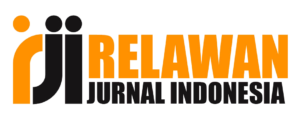Development of Teaching Materials on PLSV Using Scientific and Contextual Approach to Improve Mathematics Communication Ability and Self Confidence
DOI:
https://doi.org/10.22460/jiml.v5i1.10473Keywords:
Mathematics Communication Ability, Self Confidence, Scientific Approach, Contextual Approach, Teaching materialsAbstract
References
Budiarti, WN, & Haryanto, H. (2016). Development of comics media to improve learning motivation and reading comprehension skills of fourth grade students. Prima Edukasia Journal , 4 (2), 233–242.
Budiarti, WN, & Haryanto, H. (2016). Development of comics media to improve learning motivation and reading comprehension skills of fourth grade students. Prima Edukasia Journal , 4 (2), 233–242.
Ekawati, R., Junaedi, I., & Nugroho, SE (2013). Study of Student Responses in Solving Mathematical Problem Solving Problems Based on Solo Taxonomy. Unnes Journal of Research Mathematics Education , 2 (2).
Gall, MD, Borg, WR, & Gall, JP (1996). Educational research: An introduction . Longman Publishing.
Hadijah, S. (2018). Analysis of Student and Teacher Responses to the Use of Interactive Multimedia in the Mathematics Learning Process. Numeracy , 5 (2), 176–183.
Iskandar, SM (2016). Approach to metacognitive skills in science learning in the classroom. Erudio Journal of Educational Innovation , 2 (2), 13–20.
Juliandita, E. (2017). INCREASING COMMUNICATION ABILITY AND CREATIVE THINKING AND THE HABITS OF THE MATHEMATICAL MIND OF SMP STUDENTS WITH SYNECTIC LEARNING: A quasi-experimental at a public junior high school in Pekanbaru . Indonesian education university.
Kusumawardani, DR, Wardono, W., & Kartono, K. (2018). The Importance of Mathematical Reasoning in Improving Mathematical Literacy Ability. PRISMA, Proceedings of the National Mathematics Seminar , 1 , 588–595.
Mulhamah, & Putrawangsa, S. (2016). Application of Contextual Learning in Improving Mathematical Problem Solving Ability Mulhamah and Susilahudin Putrawangsa Mathematics Education FITK Mataram State Islamic Institute. Mathematics Education , 10 (1).
Nugrawati, U., Nuryakin, N., & Afrilianto, M. (2018). Analysis of Learning Difficulties in Mathematical Communication Ability of MTs Students in Cimahi City with Triangles and Quadrilaterals. IndoMath: Indonesia Mathematics Education , 1 (2), 63–68.
Nuralam, N., & Eliyana, E. (2018). Application of a Scientific Approach to Mathematical Problem Solving Ability at Sman 1 Darul Imarah Aceh Besar. Didactic Scientific Journal , 18 (1), 64. https://doi.org/10.22373/jid.v18i1.3085
Purnama, S. (2016). Research and development methods (an introduction to developing Arabic learning products). LITERATURE (Journal of Educational Sciences) , 4 (1), 19–32.
Septianti, N., & Afiani, R. (2020). The Importance of Understanding the Characteristics of Elementary School Students at SDN Cikokol 2. AS-SABIQUN , 2 (1), 7–17.
Suherman, E. (2003). Contemporary mathematics learning strategies. Bandung: Jica .
Suryadi, D. (2013). DIDACTICAL DESIGN RESEARCH (DDR) IN THE DEVELOPMENT OF MATHEMATICS LEARNING. In A. Nurjaman, R. Sariningsih, IP Sari, & G. Kadarisma (Eds.), Proceedings of the National Seminar on Mathematics and Mathematics Education, STKIP Siliwangi Bandung (pp. 3–12).
Susanti, YSS (2014). Improving Communication and Mathematical Problem Solving Skills for High School Students Through Reciprocal Teaching . UNPAS.
Tambunan, LO (2021). Creative Problem Solving Learning Model To Improve Mathematical Reasoning And Communication Skills. JNPM (National Journal of Mathematics Education) , 5 (2), 362–373.
Trijono, R. (2012). Alternative model of analysis of laws and regulations. Journal of Rechts Vinding: National Law Development Media , 1 (3), 361–374.
Umar, W. (2012). Build mathematical communication skills in learning mathematics. Infinity Journal , 1 (1), 1–9.
Yanti, AH (2017). The application of the problem based learning (PBL) model to the communication skills and mathematical problem solving abilities of Lubuklinggau junior high school students. Journal of Mathematics Education Raflesia , 2 (2).
Yeni, EM (2015). Difficulty learning mathematics in elementary school. Journal of Basic Education (JUPENDAS) , 2 (2).














